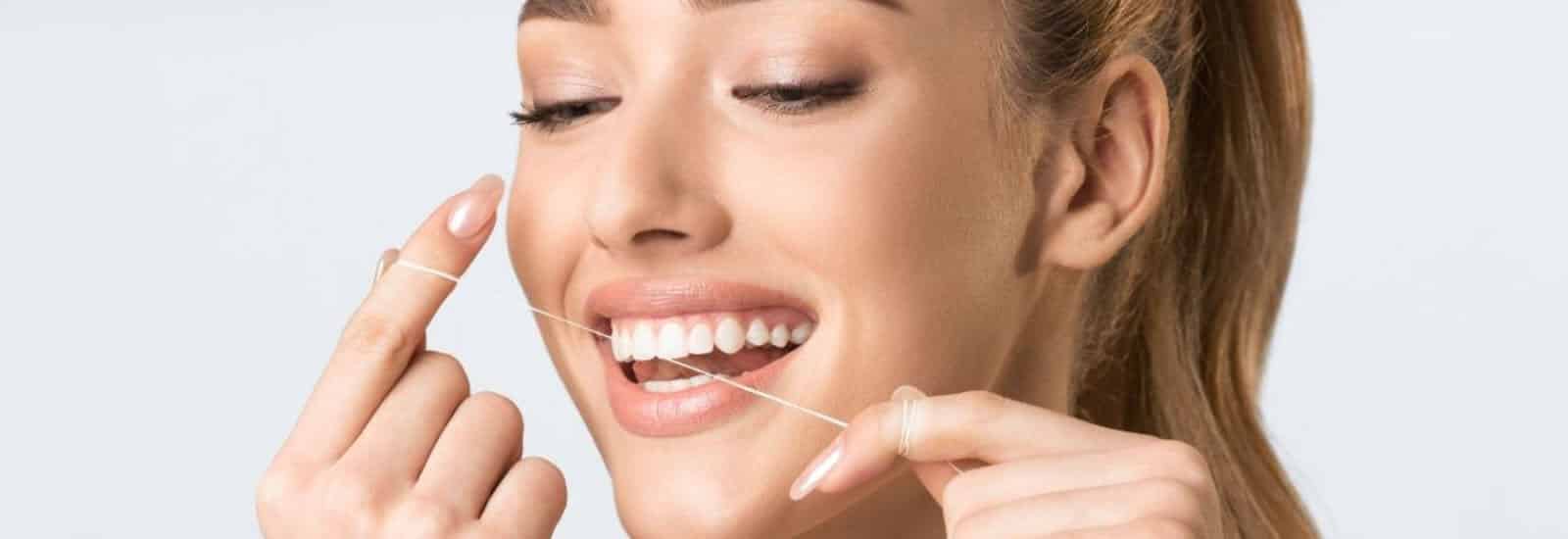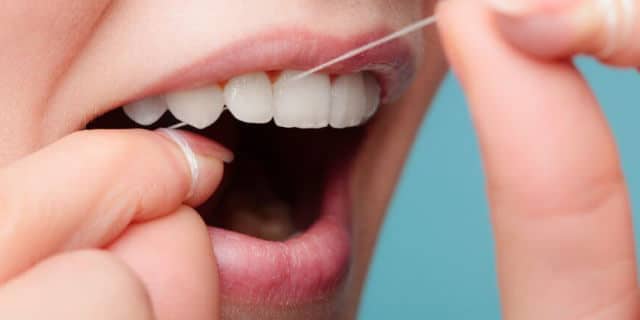How to use a Dental Floss Efficiently
Gum infection starts at the gum line and in the spaces between teeth. Flossing on a daily basis is an important element of your oral health care regimen since it helps eliminate plaque from areas where a toothbrush can’t even reach. To brush those hard-to-reach spots, all you have to do is slide some thread through your teeth. While the concept is straightforward, there are a few methods to perfect in order to get the most out of your flossing routine. However, appropriate flossing skill is required to enjoy the full advantages.

Talk to a Dentist Now!
Before reaching for the floss, wash your hands because you’ll be putting your fingers in your mouth. In four easy stages, the American Oral Hygienists’ Union highlights the important principles of correct flossing technique:
1. Wind

Wrap 18 inches of floss around one hand’s middle finger or index finger, whatever you like, and a tiny portion through the other hand’s middle or index finger. (To use your middle finger frees up your index finger for floss manipulation.) That may seem excessive, but you’ll need that much to maintain a clear section in place as you advance from tooth to another. Hold the floss between your thumbs and index fingers, providing a 1 to 2 inch gap. Floss among upper teeth using your thumbs.
2. Guide

Among both your fingers, keep a 1 t 2 inch piece of floss taut. Floss between lower tooth contacts using your index fingers.
3. Glide

Using a zig-zag movement, gradually introduce floss between your teeth. Make sure the floss doesn’t break or “snap” between your teeth. Curve floss along the edge of the tooth, wrapping it in a C shape as you go.
4. Slide

Floss against the surface of the tooth and below the gums, ensuring to floss the rear side of each tooth. Unroll a new piece of floss through one hand’s finger while wrapping the used floss onto the other hand’s finger as you proceed from one tooth to another. Make a guide with your thumb.
This method works with any form of floss, including waxed, unwaxed, sponge floss, and oral tapes. The type of floss you use is a subject to individual choice as long as you follow the proper approach. There are many different sorts to pick from, and you can mix it up to fulfil your and your family ‘s requirements.
When flossing, your main objective should be to clean against each tooth as much as possible to minimize / remove plaque. You should be able to remove the food among your teeth without really considering about it as long as you continue to do this.
About Author

Dr. Reena is a graduate of Maharashtra University of Health Sciences with a Bachelor in Dental Surgery. Dr. Reena Waghela is a leading dental surgeon having over twelve years of experience, with a special focus on advanced dental care. She is trained in Implant Dentistry, Aesthetics, and Full Mouth Rehabilitation. She picked up the finer nuances of Dental Practice Management while assisting leading dental surgeons during her time in the USA.
Frequently Asked Questions
Why do gums bleed after flossing?
An individual may see some blood after brushing their teeth or flossing, which can aggravate sensitive gums. The most common reason for an individual’s gums to bleed is due to plaque or tartar development. These substances allow microbes to develop along the gum line. Great oral cleanliness can prevent sensitivity and bleeding.
Is it better to floss before or after brushing?
Flossing isn’t just for getting rid of food squeezed between your teeth. Regular flossing may also lower the risk of gum disease and bad breath by removing plaque that forms along the gum line. So, it is better to floss before brushing your teeth.
Should I floss between gum and tooth?
There are different sides to each space between your teeth and you should floss each side independently so as not to harm the triangle of gum tissue between your teeth. Run the floss all over the outside of the tooth, ensuring you are going down to the gum line and afterward up to the most elevated contact point between the teeth.
How long should you floss each tooth?
On the off chance that you utilize normal floss, give yourself 10 to 15 minutes to floss your teeth. With this technique, pick waxed floss, which is less inclined to tear and get stuck in your braces.
Does flossing loosen teeth?
Some energetic flossers utilize a saw-like movement to get their teeth as perfect as could really be expected. This inappropriate flossing strategy can wear through the tooth’s enamel and can even bring about periodontal bone loss in outrageous cases. Flossing inappropriately can make your teeth become loose and drop out.








